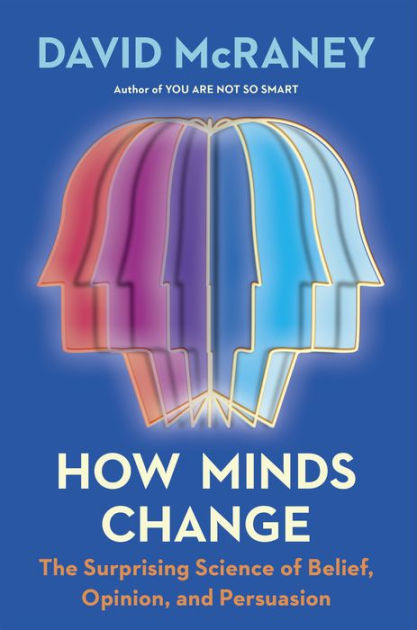Why Your Brain Lies to Itself: A Mind-Changing Look at “How Minds Change”
Why Your Brain Lies to Itself: A Mind-Changing Look at “How Minds Change”
I started out reading David McRaney’s “How Minds Change” wanting to hate it. Just another pontificating intellectual, I thought. But then as I got into it, my mind changed. And although about individuals, the relevance to Organisational Psychotherapy became clear. Even if the answer to “…how do collective minds change” has not become entirely clear as yet.
The Desire for Consistency Deludes Us
One of the book’s great strengths is how approachably McRaney conveys complex concepts through compelling real-world examples anyone can relate to. He deftly illustrates how our innate desire to seem consistent frequently causes us to rationalise away contradictory information. We meet people who have gone to extraordinary lengths to cling to conspiracy theories, fanciful identities, and quack medical treatments despite overwhelming opposing evidence.
Online Echo Chambers Reinforce Our Delusions
McRaney also delves into the polarising effects of internet echo chambers, highlighting how we gravitate towards online sources that reinforce our views – likely contributing to rising societal divides. He makes a persuasive case that we are beautifully equipped for detecting patterns but ill-suited for changing our minds about them once beliefs have formed.
Tools For the Job
The book also sheds light on the tools we might use to change our minds – and the minds of others (if they’re so willing) – on specific issues. For example, “Deep Canvassing*” with its opening questions:
- “Where or from whom did you first hear about this issue?”
- “Do you know of anyone that has been personally affected by this issue?”
Cultivating an Open Mind
While How Minds Change paints a sobering picture of human stubbornness, it provides insights into approaches for becoming more open-minded. Developing humility, seeking differing perspectives, empathising, listening, and questioning our motives can help overcome our resistance to belief revision.
An Elegant Wake-Up Call
This superbly researched and engagingly written book is an illuminating look at how our minds so readily convince us of untrue things. How Minds Change is a must-read for understanding complexities of reasoning, cognition, and our self-deceptions. Crucially, it offers invaluable guidance for learning how to re-evaluate our most steadfast notions with an open mind.
What began as skepticism towards yet another intellectual piling on, quickly transformed into an eye-opening journey into the depths of my own mind’s resistance to change. Engaging stuff.
* Deep Canvassing
Deep canvassing is a method of door-to-door political campaigning that aims to have longer, deeper conversations with voters in order to try to change their minds on particular issues rather than just persuading them how to vote.
The key principles of deep canvassing are:
1. Using active listening and open-ended questions to have an in-depth, two-way conversation rather than just delivering scripted talking points.
2. Focusing on trying to understand the root motivations, experiences, and values that underlie a person’s stance on an issue.
3. Sharing personal narratives and trying to find common ground while also respectfully bringing up counterpoints.
4. The goal is not just to win a voter over in that moment, but to plant seeds that could lead them to re-evaluate and potentially change their stance – and minds – over a longer period of time.
Deep canvassing was pioneered in the United States by the LGBTQ rights organization LBGT Action in the lead up to same-sex marriage ballots. Their deep canvassing approach was found to be remarkably effective at shifting voter attitudes compared to traditional persuasion canvassing.
While more time-intensive, deep canvassing recognises that people’s views on controversial issues are often deeply rooted and simply dismissing or arguing against them directly is ineffective. By facilitating open-ended conversations that chip away at preconceptions over time, it aims for more durable opinion shifts.

